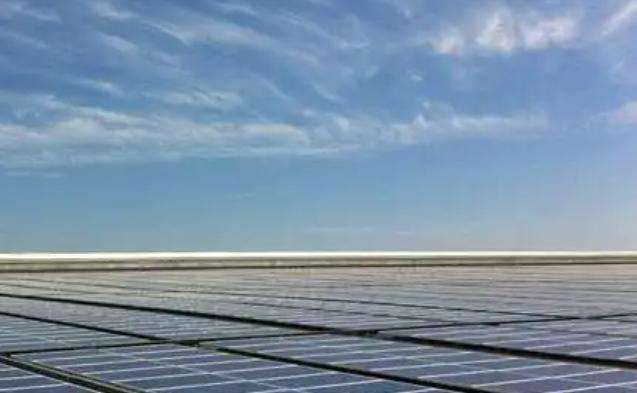1. Solar cells are devices that use the photoelectric effect of semiconductor materials to convert solar energy into electrical energy.
2. The basic process of photovoltaic effect: assuming that light shines on the solar cell and the light is accepted at the interface layer , photons with enough energy can pass between P-type silicon and N-type silicon. In type silicon, electrons are excited by covalent bonds, resulting in the generation of electron-hole pairs.
3. Electrons and holes adjacent to the interface layer will be separated from each other by the action of the electric field of the space charge before recombination . The electrons move towards the positively charged N region and the holes move towards the negatively charged P region. Thanks to the separation of charges from the interface layer, aOutward testable voltage will be formed between region P and region N.
4. At this point, electrodes can be added to both sides of the silicon wafer and a voltmeter can be connected. For crystalline silicon solar cells, the typical value of open circuit voltage is 0.5 to 0.6 V. The more electron-hole pairs generated by light illuminating the interface layer, the lower the current is high.
The principle of solar energy is the photovoltaic effect.
Photovoltaic effect: assuming that light shines on the solar cell and light is admitted at the interface layer, photons with sufficient energy can eliminate electrons Covalent bonds in P-type silicon and N-type silicon bonds are excited, resulting in the generation of electron-hole pairs. The electrons and holes adjacent to the ser interface layerseparated from each other thanks to the electric field resulting from the space charge before recombination. The electrons move towards the positively charged N region and the holes move towards the negatively charged P region. Through the charge separation of the interface layer, an outward testable voltage will be generated between the P region and the N region.
At this point, electrodes can be added to both sides of the silicon wafer and a voltmeter can be connected. For crystalline silicon solar cells, the typical value of open circuit voltage is 0.5 to 0.6 V. The more electron-hole pairs generated by light illuminating the interface layer, the lower the current is high. The more light energy the interface layer absorbs, the larger the surface area of the interface layer, i.e. the battery, and the greater the current formed in the solar cell.
Two methods of producingsolar energy:
Light-heat-electricity: Generate electricity using thermal energy generated by solar radiation. Generally, a solar collector converts absorbed thermal energy into. The steam from the working fluid then drives the steam turbine to produce electricity. The first process is a light-heat conversion process; the second process is a thermal-dynamic conversion process into electricity and the final conversion process, which is the same as ordinary thermal power generation. The disadvantages of solar thermal energy production are low efficiency and high cost. Its investment is estimated to be at least 5 to 10 times more expensive than that of ordinary thermal power plants.
Photoelectricity: This method uses the photoelectric effect to directly convert the energy of solar radiation into electrical energy. The basic device for the cThe conversion of light into electricity is the solar cell. A solar cell is a device that directly converts solar energy into electrical energy through the photovoltaic effect. When the sun shines on the photodiode, the photodiode converts light energy from the sun into electrical energy, producing current.














